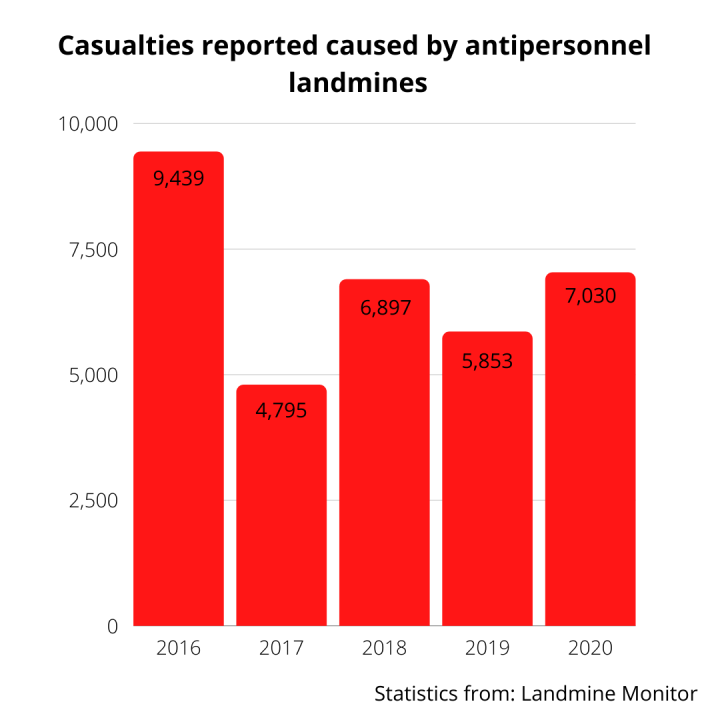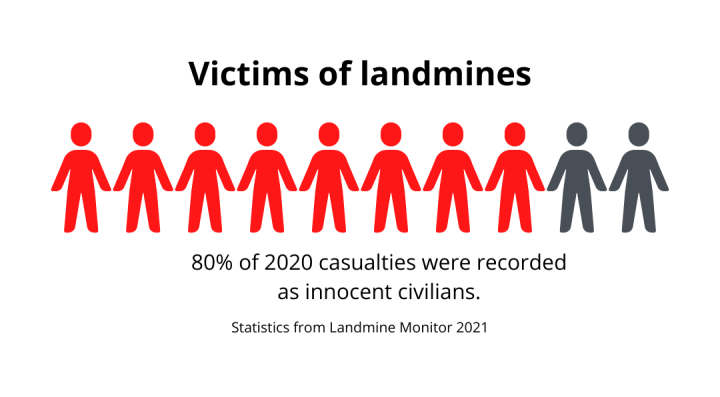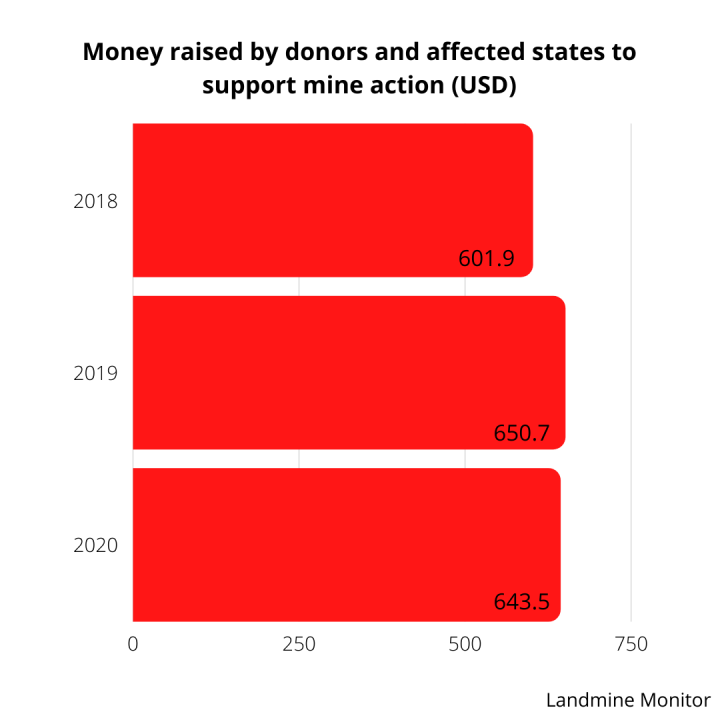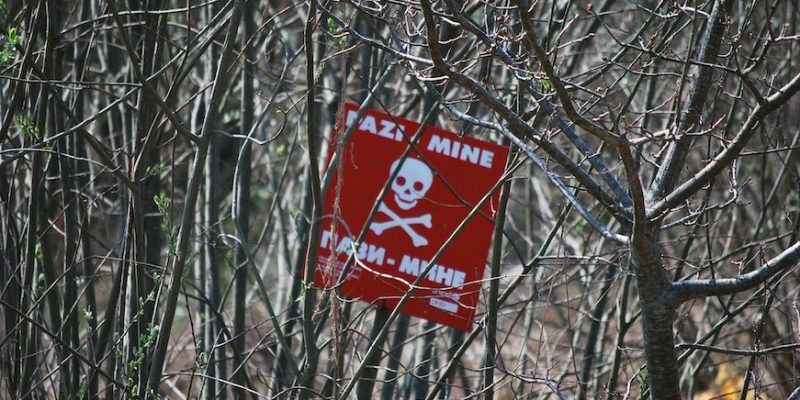Every day, people are killed or seriously injured by activating a landmine that had not been removed after a time of conflict. Most of the time, the victims are innocent civilians living in peace.
Since the creation of the Mine Ban Treaty in 1997- a global agreement to ban the use, stockpiling, production and transfer of mines- there are still roughly 50 million antipersonnel mines around the world. This is in comparison to 160 million when the treaty began.
While 164 countries have signed the treaties agreement, multiple countries continue to make and transfer mines. It is thought that 30 out of the 33 countries who have not signed the agreement still stockpile landmines including Russia, Pakistan, China and India. Among these nations, it is estimated that they collectively hold 45 million landmines that could be used at any point.
Perrine Benoist, Director of the Armed Violence Reduction Division at Humanity & Inclusion (HI), an organisation who help vulnerable people in situations of conflict and disaster, expressed the damaging impact that violence can have on a communities psychological, social and economic environment.
“Collecting unexploded bombs or explosive remnants, aim to save lives and make communities safer,” said Perrine in a press statement.
She added: “It is a large-scale problem and a major challenge for mine clearance experts.”
With 2022 marking the 25th anniversary of the Mine Ban treaty, and the world working towards a Landmine Free 2025, Perrine said that the most effective way to achieve this is through humanitarian mine clearance.
The latest statistics from the Landmine Monitor report, published in November 2021, show that 2020 was the sixth year running with a rising number of casualties from stepping on active mines as well as other explosive remnants of war.
In 2020, 7,030 casualties of mines were reported: 2,492 were killed at 4,561 were injured. The 2020 reporting represents an increase of (%) from 5,853 casualties reported in 2019.

Compared to the lowest annual recorded in 2013, which saw 3,456 casualties, the 2020 statistics are almost double what they were during this period.
While life changing initiatives are happening around the globe, and the use of antipersonnel landmines are now relatively rare, it still remains a problem and many civilians are living in danger daily.
The vast majority of recorded mine causalities were innocent civilians living around the land, and in 2020 children accounted for half of all civilian casualties where the age was known (1,872).
While the statistics still represent the affect mines are having on at-risk communities, the techniques used to help clear lands of mines have become more innovative over the last few years.
Perrine said that HI have incorporated the use of drones to help identify suspicious devices from high altitudes and will be testing out on-board cameras. These cameras will be attached to mine clearance equipment so that an expert can remotely guide their partner during a clearance.
“This is particularly useful in areas contaminated by improvised devices because they are harder to render safe and therefore pose a greater risk to our teams,” said Perrine.

Aside from the lives that landmines put at risk, they also deprive families of land that could be used for farming or housing. Many of which who live in under resourced communities.
Statistics from the Landmine Monitor show that in 2020 $643.5 million USD was raised from donors and affected states to support mine action. This funding has reinforced areas like clearance and risk education, victim assistance, capacity building and advocacy.

Céline Cheng, risk education manager at HI, explains that teaching local villagers and community people about the dangers and risks of explosive mines is crucial.
HI have mobile teams that visit at risk areas and conflict zones to hold sessions with the community, visit schools to educate children and run awareness campaigns.
She added that improvised devices do not have a standard design, and that booby-traps can often be used which makes it harder to locals to spot a device.
Booby-traps can even be hidden in the form of a drink can, soft toy, or can be triggered by a cable.
“Since improvised devices can take a variety of forms, this is not an easy task. It is hard to say what an improvised explosive device looks like. We try to make people aware of anomalies in their environment: if a busy district or street is suddenly deserted, for example, it could be a sign of danger.”
If a landmine free 2025 is possible, Perrine pointed out the crucial steps needing to take place.
“Neutralising weapons, raising awareness of at-risk communities, assisting victims, analysing the impact of conflicts and the presence of explosive devices, and providing communities with alternatives to meet their essential needs are essential activities and help “transform” a conflict situation into lasting peace.”


 The Disco Demolition. A night that shaped music forever.
The Disco Demolition. A night that shaped music forever.